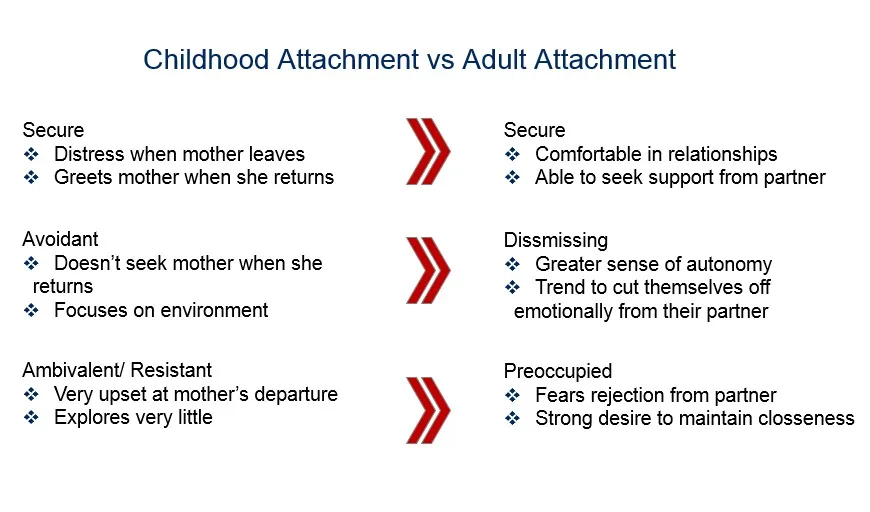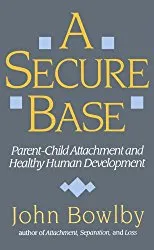The 1940s can be considered the beginning of research on attachment (Bowlby, 1958). Previous studies on children and babies during separation from the mother haven’t been identified. The first of them, conducted by Anna Freud and Dorothy Burlingham, concern healthy children between the ages of birth and the age of four. These observations were carried out at the Humpstead Nursries under the best conditions (when we consider that it happened during war). Much of what has been recorded during the study, despite the unsystematic nature of the observations, is now regarded as typical phenomena.

Attachment
(Pexels)
Using the data collected by Robertson (observation of behaviors of two and three years during their stay in a 24/7 nursery under traditional care), it can be established that a child between fifteen and thirty months who was in a safe relationship with the mother will show a specific a predictable reaction in which three phases can be distinguished (protest, despair and disconnection) (Bowlby, 1968).

John Bowlby
(wikipedia)
The protest phase, lasting from a few hours to about a week, can start immediately or occur with a delay. In this phase, the child seems to be in severe distress due to the loss of the mother. Behavioral indicators of this phase include acute crying, high physical activity (throwing), shaking the cot and rejecting alternative figures (although some children have "desperate adherence" to the nurse). In addition, the behaviour suggests that the child is convinced of the mother's return. The child's preoccupation with the lost mother is still visible in the despair phase, although his behaviour is characterized by helplessness. Previously large physical activity significantly weakens or ceases completely. Often this period is confused with the weakening of distress. This is related to the passivity and withdrawal of a child who, in comparison to the previous phase, behaves quietly, while at the same time gives the impression of being in a state of strong regret.
The disconnection period is characterized by the increase of the child's interest in their own environment. The reactions of rejecting alternative figures from which the child begins to receive care and food are inhibited. A smile appears on their face, which is often welcomed, but when interacting with his mother in this phase, there are behaviours that aren’t characteristic of strong attachment. The child behaves as if he did not know his mother and remained "distant and apathetic" (Bowlby, 1968).

Childhood vs Adult attachment
(my own presentation)
For the emergence of Bowlby's attachment theory, the bonds between child and the mother are fundamental. Understanding them is important for understanding the child's reaction to loss of figure (of attachment) and separation.
The theoretical solution that Bowlby proposed in 1958 differed, as he himself assured of it from all other solutions proposed then. The first one was the view called by the author the theory of the secondary drive or the love of calculation in relation to the object, according to which the mother providing the child's physiological needs is a source of gratification for him. The second solution was the theory of sucking the original object that implies the innate tendency of infants to establish relationships with the human breast and suck it and "take it oral" (Bowlby, 1968).
Assumptions
This theory assumes that after some time the child realizes that he can also establish a relationship with his mother, whom he perceives as a breast owner. The third theory mentioned by Bowlby is based on the assumption about the innate tendency of infants to be in touch with the human view that there is a "need" to have an object that is not dependent on food. This view was called the theory of sticking to the original object. The last solution is the theory that infants are dissatisfied with "exile" from the mother's womb. It is called the original desire to return to the womb. and they are striving to return to this place.

A Secure Base by John Bowlby
(ebay)
Literature:
- Ainsworth, M.D., Blehar, M.C., Waters, E., and Wall, S. (1978).Patterns of Attachment: Assessed in the Strange Situation and at Home.Hillsdale, N.J.: Lawrence Erlbaum Associates, Inc.
- Bowlby, J. (1973).Attachment and loss: Vol. 2. Separation, New York:
- Stroufe, L.A. and Fleeson, J. (1985). Attachment and the construction of relationships. In W. Hartup and Z. Rubin (Eds.),The Nature and Development of Relationships (pp. 51–71). Hillsdale, NJ: Lawrence Erlbaum Associates, Inc.
- Stern, D. (1989). The Representation of Relational Patterns. In A. Sameroff and R. Emde, (Eds.),Relationship Disturbances in Early Childhood. New York

SteemSTEM is a community driven project which seeks to promote well written/informative Science Technology Engineering and Mathematics postings on Steemit. More information can be found on the @steemstem blog. For discussions about science related topics or about the SteemSTEM project join us on steemSTEM chat.